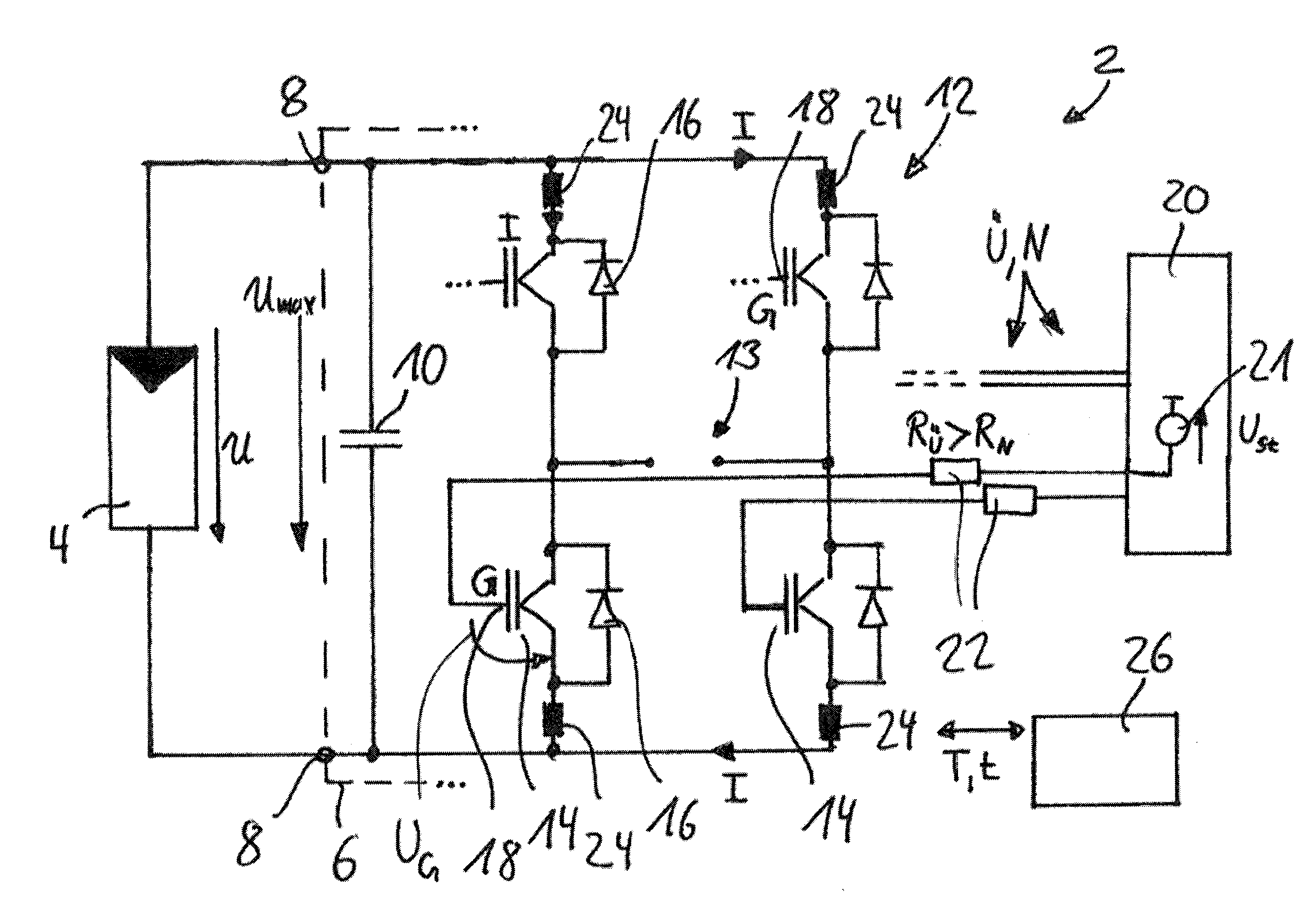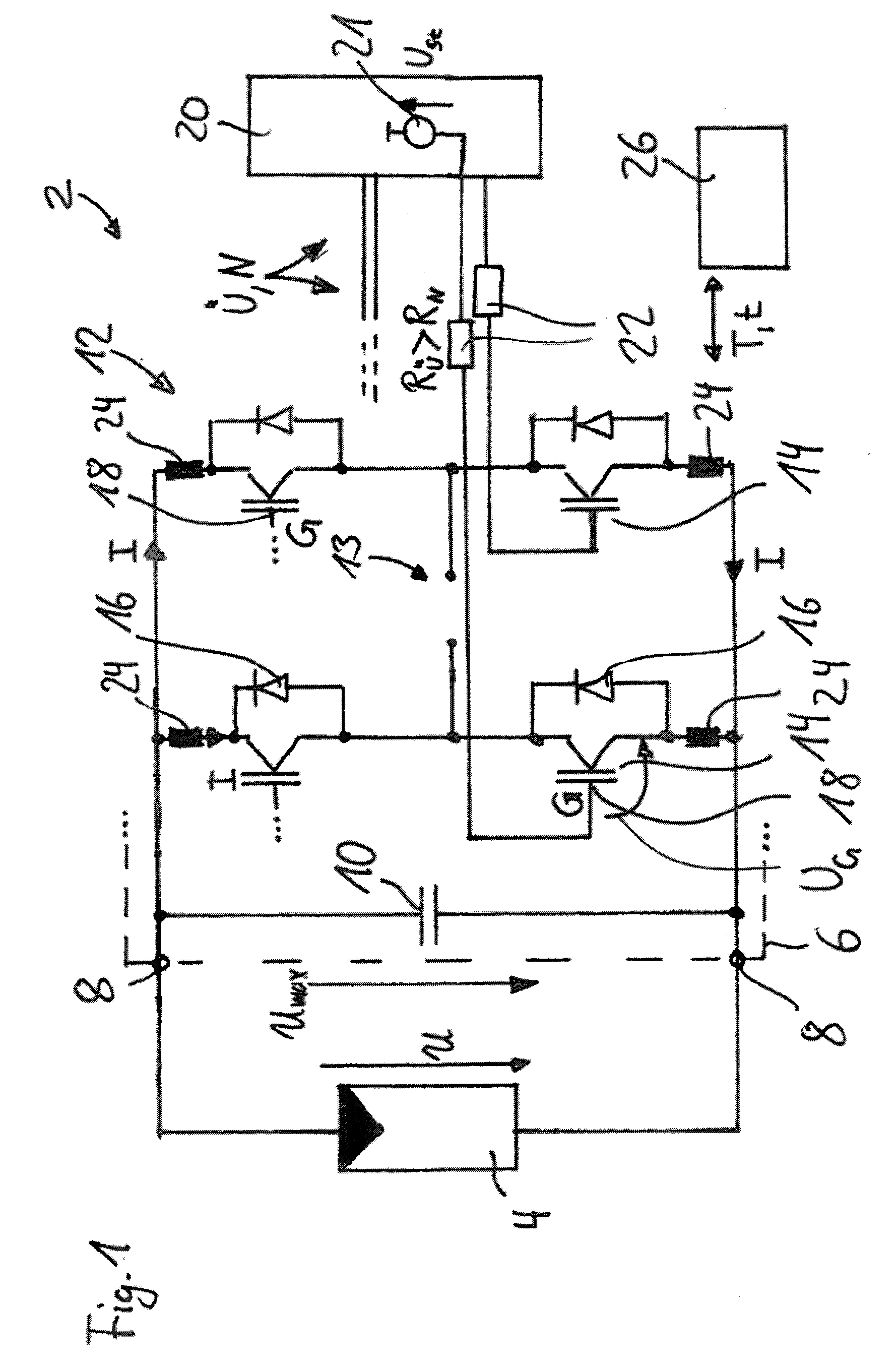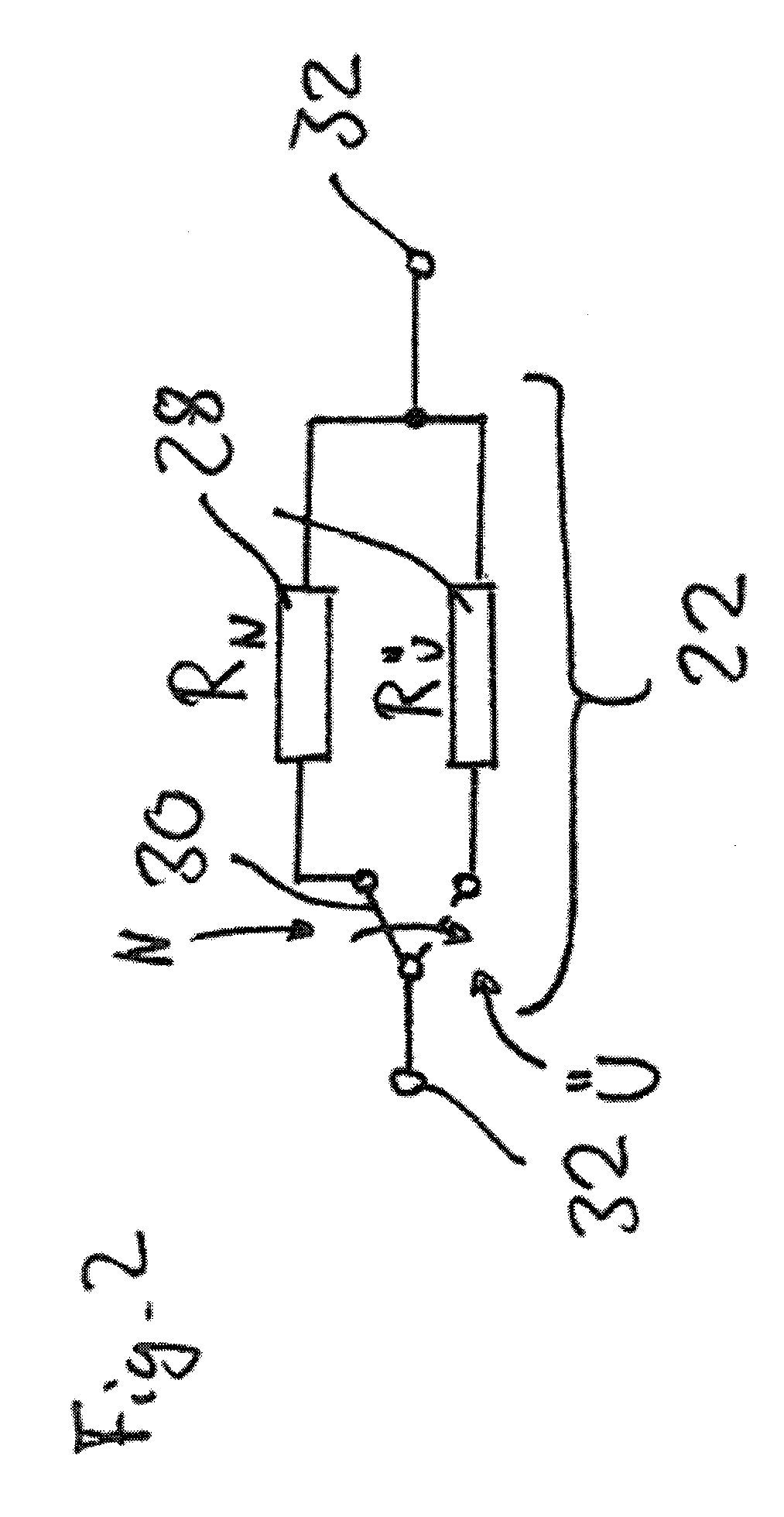Solar Module and Method for its Operation
a solar module and solar energy technology, applied in photovoltaics, electric variable regulation, ac-dc conversion, etc., can solve the problems of inability to operate, inability to operate, and inability to meet the requirements of the inverter, so as to achieve the effect of economical manufacture and efficient operation
- Summary
- Abstract
- Description
- Claims
- Application Information
AI Technical Summary
Benefits of technology
Problems solved by technology
Method used
Image
Examples
Embodiment Construction
[0041]FIG. 1 shows, generally at 2 a solar module in accordance with the invention. Solar module 2 comprises a solar cell 4 and a converter 6. During operation, solar cell 4 generates a DC voltage U, which it feeds into an input 8 of converter 6. Converter 6 converts the DC voltage U into a voltage not specifically designated, for example a network voltage.
[0042]Converter 6 contains an intermediate circuit capacitor 10 and an H-bridge 12 having four semiconductor switches 14, preferably, as illustrated, in the form of IGBTs, with which respective diodes 16 are connected in anti-parallel. Each semiconductor switch 14 has a switching input 18, here in each case the gate G of the IGBTs. Converter 6 has in H-bridge 12 an output to a network 13.
[0043]Converter 6 additionally contains a controller 20, which drives respective switching inputs 18 of semiconductor switches 14. Each switching input 18 is connected to controller 20 via a resistor 22. Controller 20 includes a voltage source 21 ...
PUM
 Login to view more
Login to view more Abstract
Description
Claims
Application Information
 Login to view more
Login to view more - R&D Engineer
- R&D Manager
- IP Professional
- Industry Leading Data Capabilities
- Powerful AI technology
- Patent DNA Extraction
Browse by: Latest US Patents, China's latest patents, Technical Efficacy Thesaurus, Application Domain, Technology Topic.
© 2024 PatSnap. All rights reserved.Legal|Privacy policy|Modern Slavery Act Transparency Statement|Sitemap



